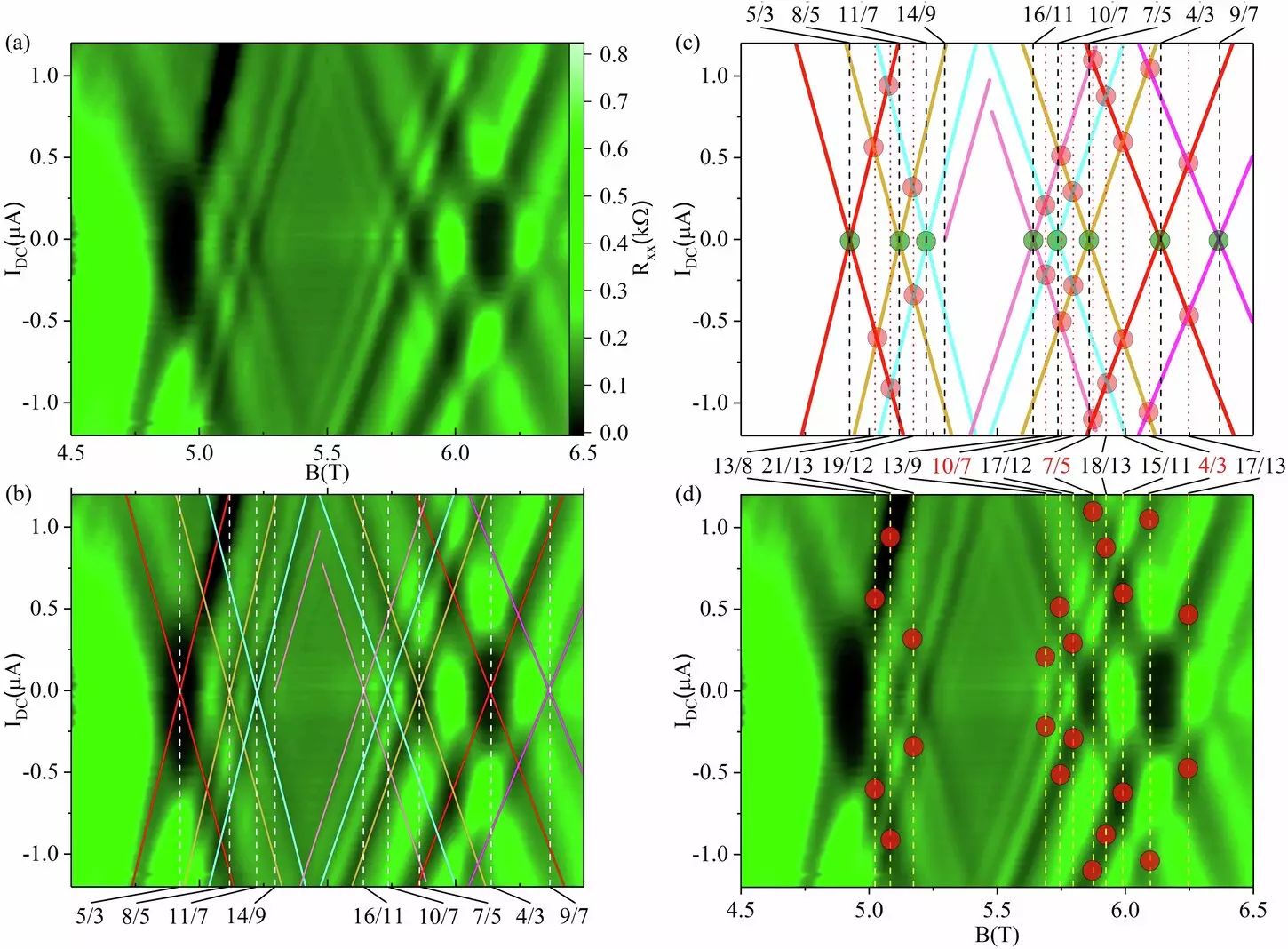In a fascinating world of two-dimensional flatland, where particles defy the laws of physics as we know them, researchers at Georgia State University have been delving into uncharted territory. Led by Professor of Physics Ramesh G. Mani and recent Ph.D. graduate U. Kushan Wijewardena, their studies have led to a groundbreaking discovery published in the journal Communications Physics.
The realm of fractional quantum Hall effects (FQHE) has long been a focal point in modern condensed matter physics. This field has been a breeding ground for novel and unexpected phenomena, challenging our understanding of particles in flatland. The journey began in 1980 with the discovery of the quantum Hall effect by Klaus von Klitzing, which earned him a Nobel Prize in 1985. Subsequent breakthroughs in understanding fractional charges and massless electrons in flatland led to more Nobel Prizes in the field. These discoveries paved the way for modern electronics, revolutionizing technologies like cellphones, computers, and solar cells.
In their quest for knowledge, Mani, Wijewardena, and their colleagues conducted a series of experiments in extreme conditions, with temperatures close to absolute zero and magnetic fields thousands of times stronger than Earth’s. By applying a supplementary current to semiconductor devices made from gallium arsenide and aluminum gallium arsenide, the team observed unexpected splittings and crossings of FQHE states. This allowed them to explore new non-equilibrium states and unveil entirely new forms of matter. The study emphasizes the importance of high-quality crystals in achieving these results.
Wijewardena, now a faculty member at Georgia College and State University, expressed his excitement over the team’s findings. Their ability to induce excited states of FQHE through direct current bias represents a significant milestone in their research. The study challenges existing theories and hints at a hybrid origin for these non-equilibrium states, opening up new avenues for research and technological advancements in condensed matter physics.
The implications of their work extend far beyond the confines of the laboratory, offering potential insights for quantum computing and materials science. By exploring uncharted territories in quantum physics, the team is laying the groundwork for future technologies that could revolutionize data processing and energy efficiency. As they continue to push the boundaries of what is known, they remain open to the possibility of new discoveries that could reshape our understanding of complex quantum systems.
Mani, Wijewardena, and their team are now expanding their research to explore even more extreme conditions and develop new methods for measuring flatland parameters. With each experiment, they move closer to unraveling the intricate behaviors at play in quantum systems, driving towards a deeper understanding of the mysteries of flatland physics. Their dedication and curiosity are paving the way for a new generation of researchers to push the boundaries of what is possible in the world of quantum physics.


Leave a Reply